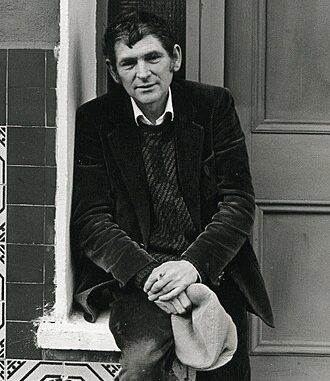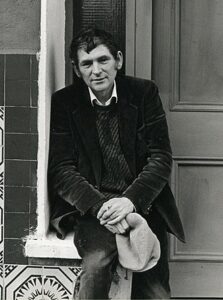

A Tribute to Michael Hartnett
In Tipperary town
it was heavy raining
when I first read Inchicore Haiku —
Michael Hartnett
his creative process trembling, moving
along guinness-strewn lines
that were pushed outward
into separated faces
carried homeward to
the all-sorts of small flatted houses
damp round cheap linoleum
and a shilling for the one-barred
electric fire —
which sniffled poor heat
from the cold concrete floor
and leaned it against
the unshaven grey
of his stubbled alcoholic illness —
the hands were writing then
A Necklace of Wrens
his turbulent exile,
pilgrimage and penance —
incised my lonesome wandering
with the haunting light
of a slivering stillness.
Michael Hartnett (Micheál ÓhAirtnéide) (18 September 1941 – 13 October 1999).
A bilingual poet, he was born in Newcastle West, County Limerick. He grew up in poverty and emigrated to England the day after completing his secondary education and went to work as a tea boy on a building site in London. Later he attended University College Dublin for a year on a scholarship and was writing poetry by the early 1960s. He returned briefly to London, where he met Rosemary Grantley, they were married on 4 April 1966. His first book, Anatomy of a Cliché, was published in 1968 to critical acclaim and was the beginning of his serious writing life.
Hartnett wrote poetry in both English and Irish; his early collections include Farewell to English (1975), Adharca Broic (1978), Do Nuala: Foighne Chrainn (1984), and An Phurgóid (1989); These were followed by Inchicore Haiku (1985), A Necklace of Wrens (1987), Poems to a Younger Woman (1989), and The Killing of Dreams (1992). His Collected Poems appeared in two volumes in 1984 and 1987; and his Selected & New Poems were published in 1994.
In addition to exploring the tensions between the two languages, Hartnett’s poetry shows a strong sensitive sense of Ireland’s landscape along with a troubled relationship with Yeats’s Anglo-Irish influence. Joan Trodden Keefe, reviewing Collected Poems, Vol. 1 in World Literature Today, wrote of his “technical virtuosity and spiritual daring.”
He translated poetry from older Irish poets, including Selected Poems of Dáithí Ó Bruadair (1985). Ó Bruadair 1625 – January 1698 was one of the most significant Irish language poets of the 17th century; also The Poems of Aodhaghán ÓRathaille (1999). Aodhaghán ÓRathaille or Egan O’Rahilly (c.1670–1726) is credited with creating the first fully developed Aisling. The Aisling (Irish for dream/’vision’) or Vision poem, is a Mythopoeic poetic genre that developed during the 17th and 18th centuries in the Irish language. Hartnett also translated Federico García Lorca’s Gypsy Ballads: A Version of the Romancero Gitano of Federico García Lorca (1973) and the collection Tao: A Version of the Chinese Classic of the Sixth Century (1971).